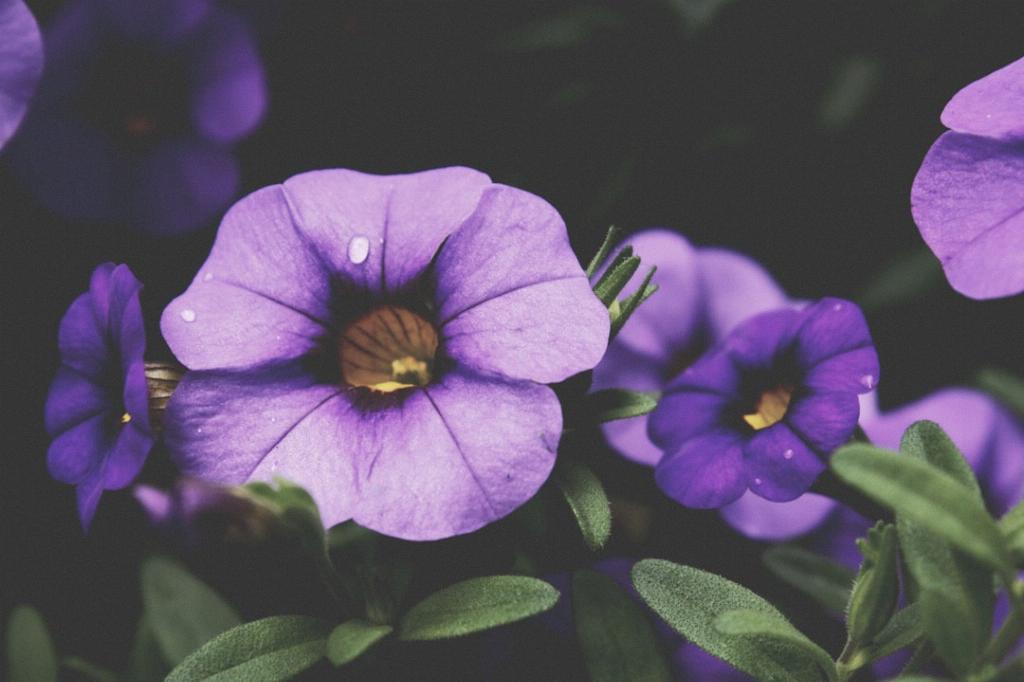Powdery mildew is a common fungal disease that affects a variety of plants, including petunias. It appears as a powdery white substance on the leaves, stems, and flowers of infected plants. If left untreated, powdery mildew can weaken the plants and inhibit their growth.
Identifying the Symptoms
Before treating powdery mildew on petunias, it’s important to identify the symptoms. Look for white powdery spots on the leaves, leaves that are distorted or yellowing, stunted growth, and wilting. Once you’ve confirmed the presence of powdery mildew, it’s time to take action.
Using Baking Soda and Soap Solution
A natural and effective way to treat powdery mildew on petunias is by creating a solution using one tablespoon of baking soda, half a teaspoon of liquid soap, and one gallon of water. Mix the ingredients thoroughly and spray the solution generously on the infected plants, ensuring complete coverage.
Exploring Mouthwash as a Treatment
Surprisingly, mouthwash can also be effective in treating powdery mildew on petunias. The same mouthwash you use to kill germs in your mouth can help combat powdery mildew spores. Dilute the mouthwash with water and spray it on the affected plants to help eliminate the fungus.
Considering Safer Brand Products
Safer Brand offers various products specifically designed to combat powdery mildew on plants, including petunias. These products are formulated to effectively control the spread of the fungus while being safe for the environment and beneficial insects.
Practicing Good Plant Care
Prevention is key in managing powdery mildew on petunias. Ensure your plants are properly spaced to allow for good air circulation, water them at the base to avoid wetting the foliage, and avoid overhead watering. A healthy plant is less susceptible to fungal diseases.
Pruning Infected Parts
If powdery mildew has already taken hold of your petunias, consider pruning the heavily infected parts to prevent the spread of the fungus. Remove and dispose of the infected leaves and flowers carefully to reduce the risk of reinfection.
Applying Neem Oil as a Natural Remedy
Neem oil is a natural fungicide that can help control powdery mildew on petunias. Mix neem oil with water as per the instructions on the product label and spray it on the affected plants. Neem oil not only combats the fungus but also acts as a deterrent for future infestations.
Using Sulfur-Based Fungicides
Sulfur-based fungicides are effective in treating powdery mildew on petunias. These products disrupt the growth of the fungus and can be sprayed on the plants to control the infection. Follow the manufacturer’s instructions when applying sulfur-based fungicides.
Considering Cultural Controls
Implementing cultural controls can help prevent powdery mildew on petunias. Avoid overcrowding plants, remove and dispose of infected plant debris, and practice crop rotation to reduce the risk of fungal diseases. Maintaining a clean garden environment is essential in preventing powdery mildew.
Repeating Treatments as Needed
Be diligent in treating powdery mildew on petunias and repeat the chosen treatment method as needed. Monitor the plants regularly for any signs of reinfection and take prompt action to prevent the spread of the fungus. Consistency is key in combating powdery mildew effectively.
Seeking Professional Advice
If the powdery mildew infestation on your petunias persists despite your efforts, consider seeking advice from a professional gardener or agricultural extension service. They can provide tailored recommendations and additional strategies to help you effectively manage the fungal disease.

